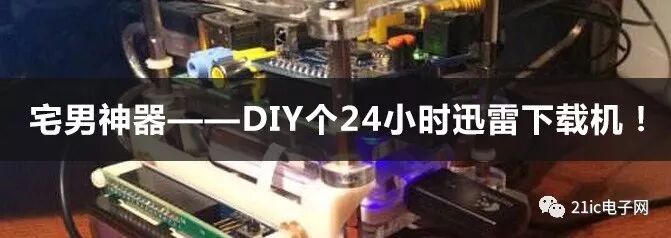Becoming a formal embedded development engineer is a challenging process that requires developers to maintain and manage every bit and byte of the system. From a well-defined development cycle to strict execution and system checks, there are many techniques for developing highly reliable embedded systems. Today, I will introduce 7 practical and long-lasting tips that are very helpful in ensuring the system runs more reliably and captures abnormal behaviors.
Tip 1 – Fill ROM with Known Values
Software developers are often a very optimistic group, as long as their code runs faithfully for a long time, that’s all that matters. The situation where a microcontroller jumps out of the application space and executes in an unexpected code space seems quite rare. However, the chances of this happening are no less than those of a buffer overflow or a dangling pointer. It does happen! The system behavior after this occurs will be unpredictable because, by default, memory space is all 0xFF, or the values in the memory area may only be known to God since they have not been written to.
However, there are quite comprehensive linker or IDE techniques that can help identify such events and recover the system. The trick is to use the FILL command to fill unused ROM with known bit patterns. There are many different combinations that can be used to fill unused memory, but if you want to build a more reliable system, the most obvious choice is to place an ISR fault handler in these locations. If the system encounters an error and the processor starts executing code outside the program space, it will trigger the ISR and provide an opportunity to store the processor, register, and system state before deciding on corrective action.
Tip 2 – Check Application CRC
A significant benefit for embedded engineers is that our IDEs and toolchains can automatically generate checksums for applications or memory spaces, allowing us to verify the integrity of the application based on this checksum. Interestingly, in many of these cases, the checksum is only used when loading the program code onto the device.
However, if the CRC or checksum is kept in memory, verifying whether the application remains intact at startup (or even periodically for long-running systems) is an excellent way to ensure that unexpected events do not occur. Now, the probability of a programmed application changing is quite low, but considering the billions of microcontrollers delivered each year and the potentially harsh working environments, the chance of application crashes is not zero. More likely, a defect in the system could lead to a sector experiencing flash writes or erases, compromising the integrity of the application.
Tip 3 – Perform RAM Checks at Startup
To build a more reliable and robust system, ensuring that the system hardware is functioning correctly is very important. After all, hardware can fail. (Fortunately, software never fails; it only does what the code tells it to do, whether right or wrong). Verifying that there are no issues with the internal or external RAM at startup is a good way to ensure that the hardware can operate as expected.
There are many different methods available for performing RAM checks, but a common method is to write a known pattern and then wait a short period before reading it back. The result should be what was written. The truth is that in most cases, the RAM check passes, which is the desired outcome. However, there is a very small chance that the check will fail, providing an excellent opportunity to indicate hardware issues in the system.
Tip 4 – Use a Stack Monitor
For many embedded developers, the stack seems to be a rather mysterious force. When strange things start happening, engineers are finally stumped, and they begin to wonder if something is going on with the stack. The result is blindly adjusting the stack size and position, etc. But the error is often unrelated to the stack; how can one be so sure? After all, how many engineers have actually performed worst-case stack size analysis?
The stack size is statically allocated at compile time, but the stack is used dynamically. As the code executes, variables, return addresses, and other information needed by the application are continuously stored on the stack. This mechanism causes the stack to grow within its allocated memory. However, this growth can sometimes exceed the capacity limits determined at compile time, leading to stack corruption of adjacent memory areas.
One way to ensure the stack is functioning correctly is to implement a stack monitor as part of the system’s “health” code (how many engineers actually do this?). The stack monitor creates a buffer zone between the stack and “other” memory areas and fills it with known bit patterns. The monitor then continuously checks for any changes in the pattern. If the bit pattern changes, it means the stack has grown too large and is about to push the system into a dark abyss! At this point, the monitor can log the occurrence of the event, the system state, and any other useful data for later diagnosis of the issue.
Most real-time operating systems (RTOS) or microcontroller systems with memory protection units (MPU) provide stack monitors. The scary part is that these features are often disabled by default or frequently intentionally turned off by developers. A quick search online reveals that many people recommend turning off stack monitors in real-time operating systems to save 56 bytes of flash space, which is a counterproductive practice!
Tip 5 – Use MPU
In the past, it was difficult to find a memory protection unit (MPU) in a small and inexpensive microcontroller, but this situation has begun to change. Now, from high-end to low-end microcontrollers, MPUs are available, providing embedded software developers with an opportunity to significantly enhance the robustness of their firmware.
MPUs have gradually been coupled with operating systems to establish memory spaces where processing is separated, or tasks can execute their code without worrying about being stomped on. If something does happen, uncontrolled processing will be canceled, and other protective measures will be executed. Be on the lookout for microcontrollers with this component, and if available, make good use of its features.
Tip 6 – Establish a Robust Watchdog System
A commonly favored implementation of a watchdog is to enable the watchdog (a good start) but also to reset the watchdog with a periodic timer; the timer’s activation is completely isolated from any situation that occurs in the program. The purpose of using a watchdog is to help ensure that if an error occurs, the watchdog will not be reset, meaning that when work halts, the system will be forced to perform a hardware reset to recover. Using a timer that is independent of system activity allows the watchdog to remain reset even if the system has failed.
Embedded developers need to carefully consider and design how application tasks integrate into the watchdog system. For example, a technique might allow each task running within a certain period to indicate that it can successfully complete its task. In this event, the watchdog is not reset, forcing a reset. There are also more advanced techniques, such as using an external watchdog processor that can monitor how the main processor performs and vice versa. Establishing a robust watchdog system is crucial for a reliable system.
Tip 7 – Avoid Dynamic Memory Allocation
Engineers who are not accustomed to working in resource-constrained environments may attempt to use features of their programming language that allow them to use dynamic memory allocation. After all, this is a technique commonly used in computing systems, where memory is allocated only when necessary. For example, when developing in C, engineers may tend to use malloc to allocate space on the heap. An operation will execute, and once completed, the allocated memory can be returned using free for heap usage.
In resource-constrained systems, this can be a disaster! One of the problems with using dynamic memory allocation is that improper techniques can lead to memory leaks or fragmentation. When these issues occur, most embedded systems do not have the resources or knowledge to monitor the heap or handle it properly. And when they do occur, what happens if the application requests space but there is no space available?
The problems arising from using dynamic memory allocation are complex, and properly handling these issues can be a nightmare! An alternative approach is to simplify memory allocation statically. For example, simply create a buffer of 256 bytes in the program instead of requesting a memory buffer of that size via malloc. This allocated memory can be maintained throughout the application’s lifecycle, and there will be no concerns about heap or memory fragmentation issues.
Conclusion
The above tutorial on embedded development can help developers acquire better methods for embedded systems. All these techniques are the secrets that allow designers to develop more reliable embedded systems.
Recommended


